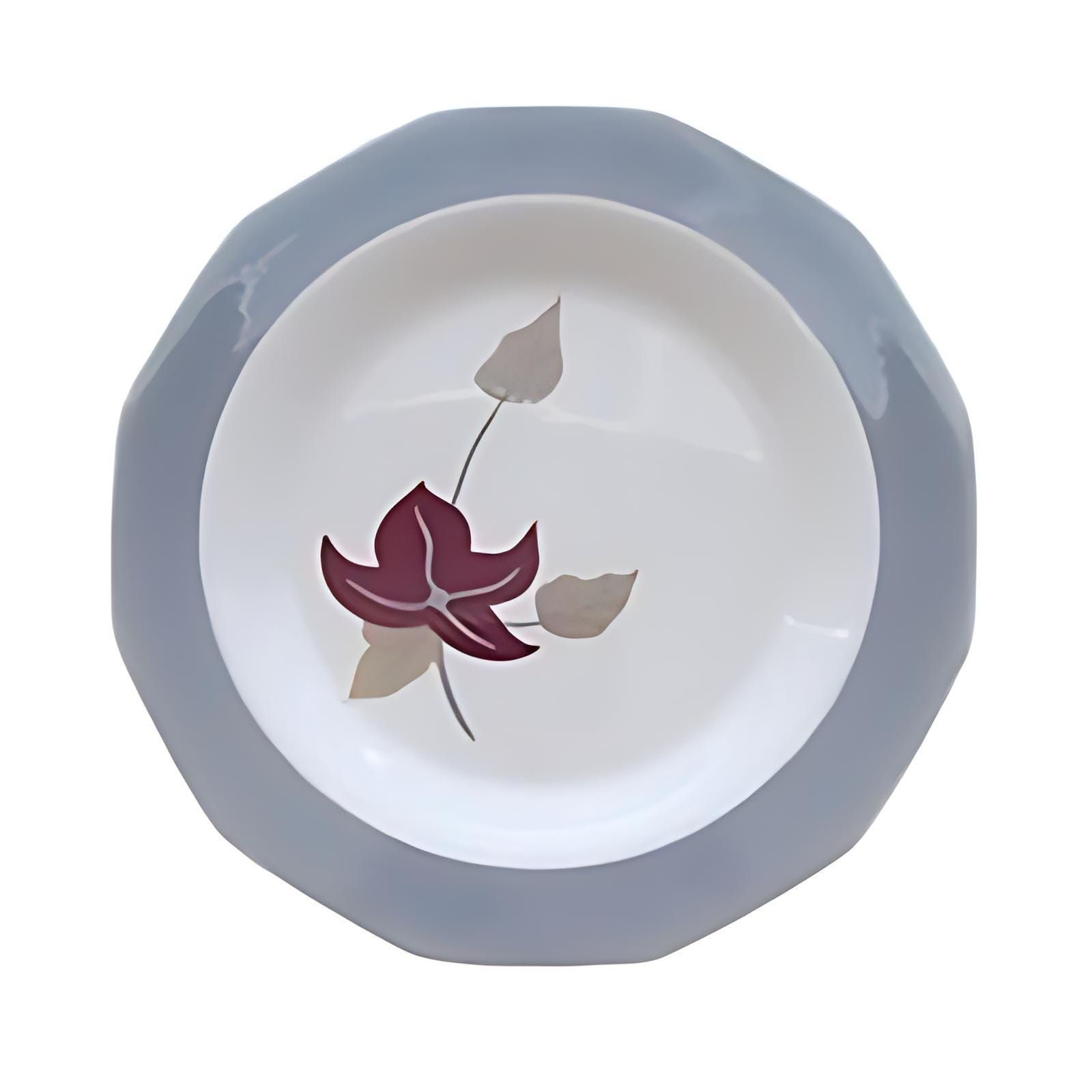Pottery on the Ohio River: The Legacy of Wellsville China
Written by cindybarron007
- Bycindybarron007
- PublishedAugust 2, 2025
- Another Pottery on the Ohio River: The Legacy of Wellsville China
The small village of Wellsville is nestled along the banks of the Ohio River in eastern Ohio. It holds a quiet but meaningful place in America’s ceramic history. East Liverpool is its more famous neighbor and earned the title “Pottery Capital of the World.” Nonetheless, Wellsville contributed significantly to the pottery industry. This industry shaped the Ohio River Valley.This region—spanning from Pittsburgh, Pennsylvania to Wheeling, West Virginia—was once a powerhouse of American ceramics. The area had access to natural clay deposits. It was well-connected through transportation via the Ohio River and railways. Generations of skilled artisans lived in these towns. With all these resources, towns like Wellsville helped supply the nation with everything from everyday tableware to elegant hotel china.
A Personal Connection to the Potteries
I have spent countless hours researching, visiting, collecting, and admiring these regional ceramics. As a result, my appreciation for the potteries along the Ohio River runs deep. In my earlier blog, Memories of Potteries Along the Ohio River, I shared how these communities shaped American tableware. Both large and small communities played a role. They also influenced my own sense of historical connection. There’s something deeply comforting about holding a piece of vitrified china. You can imagine the hands that crafted it. Picture the generations of diners who used it. The legacy of towns like Wellsville isn’t just industrial—it’s personal, meaningful, and enduring.
Pottery on the Ohio River
The pottery industry along the Ohio River dates back to the early 1800s. Abundant local resources—including high-quality clay and easily accessible coal—made the area ideal for ceramics manufacturing. The river was a superhighway for shipping goods. Railroads arrived in the mid-19th century. They expanded that reach even farther.Key cities like East Liverpool, Steubenville, and Wheeling became centers of innovation and production. East Liverpool alone was home to over 300 potteries at one point. These potteries employed thousands of workers. They produced millions of pieces of ceramic ware annually.This region specialized in:
- Stoneware and redware (used for crocks, jugs, and kitchen storage)
- Whiteware, porcelain, and vitrified china
- Custom-decorated hotel and institutional ware
Generations of European immigrants made much of this work possible. They brought their pottery-making skills to the American frontier. Immigrants from England and Germany were especially significant in this effort.
The Wellsville China Company: Functional Elegance
One of the most prominent potteries in Wellsville was the Wellsville China Company, founded in 1902. It never reached the scale of some East Liverpool manufacturers. Yet, it carved out a respected niche in the growing market for durable, institutional-grade ceramics.
Built to Last
Wellsville China specialized in vitrified hotelware—dense, high-fired porcelain designed to withstand heavy use in restaurants, railcars, hospitals, and hotels. These wares were meant to last for years and resist chipping, cracking, and staining.Thanks to Wellsville’s riverfront location, the company easily ships its products nationwide. Its workforce benefited from the proximity to the region’s rich tradition of ceramic craftsmanship.
Simple Yet Distinctive Designs
Although utilitarian in nature, Wellsville China’s pieces were far from dull. Many featured:
- Banded rims in red, blue, green, or black
- Decal motifs like floral sprays or geometric borders
- Custom logos or crests for railroads, hotels, and institutions
- Occasional gold or platinum trim for upscale use
These patterns, while simple, conveyed a sense of quality and reliability. This made Wellsville China a trusted name in the food service and transportation industries.
Collector Interest Today
Today, Wellsville China pieces are sought after by collectors of:
- Vintage restaurant ware
- Railroad memorabilia
- Ohio pottery history
Pieces with identifiable backstamps or client logos (like a railroad emblem or hotel crest) are especially collectible. Most are marked “Wellsville China Co.” or “Wellsville China,” sometimes accompanied by a date code or the word “Vitrified.”
Where to Find Wellsville China Today
You can still find original Wellsville China pieces at:
- B and B Collectibles, LLC — their official site offers vintage and replacement dishes: bandbcollectiblesllc.net
- eBay Store: B and B Collectables LLC — hosts a variety of vintage China, glassware, and more: ebay.com/str/bandbcollectablesllc
The Industry’s Decline
Like many other U.S. potteries, Wellsville China eventually struggled to compete with imported ceramics from Asia in the mid-20th century. As disposable plastics became popular and restaurant dining habits shifted, demand for heavy-duty institutional china declined. By the latter half of the 1900s, Wellsville China had closed its doors. This was part of a broader collapse of American ceramic manufacturing.The pieces they left behind tell the story of a once-thriving industry. They reveal the legacy of skilled workers and a small river town. This town played its part in shaping everyday American life.
Visiting and Learning More
If you’re interested in exploring this history further, consider visiting the Museum of Ceramics in East Liverpool, Ohio. It houses an impressive collection of regional pottery, including items made by Wellsville China and its contemporaries.
References & Suggested Reading
- ss=”cursor-pointer” target=”_new” rel=”noopener” data-start=”4533″ data-end=”4590″>Museum of Ceramics, East Liverpool, OH – regional pottery collections
- “Pottery Capital of the Nation” by William C. Gates, Jr. – East Liverpool’s ceramic history
- t=”4746″ data-end=”4850″>Lehner’s Encyclopedia of U.S. Marks on Pottery, Porcelain & Clay – identifying Wellsville backstamps
- >East Liverpool Historical Society – local heritage and archival information
- “4980” data-end=”5144″>Restaurant Ware Collectors Network – pattern & maker guides on Wellsville China
- Collectable Ivy blog – notes early Wellsville potteries from 1879 through the 1960s
Related
Memories of Potteries Along the Ohio RiverMay 16, 2025In "Blog"
The Legacy of Gail Pittman Pottery: A Southern Story of ColorJune 23, 2025In "Blog"
From Fulper to Stangl: An American Pottery TaleJune 18, 2025In "Blog"
B and B Collectibles, LLC
